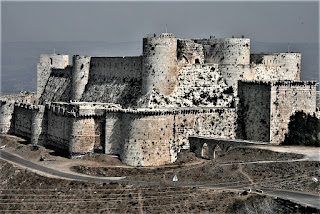這個網誌 ( Blog ) 是得到老同學韓道豐的授權,用來轉貼他周游列國的游記,内容圖文并茂, 生動有趣。---------------- Re-posting of travel stories by old classmate Hon Too Fang, with permission.
Saturday 5 October 2019
Exploring the Mayan ruins at Palenque, Mexico
Friday 4 October 2019
The majestic Red Square, Moscow, Russia
见识贫穷的中国贵州-新桥苗寨和地扪侗寨 Experience the impoverished Miao and Dong villages in Guizhou, China
WS 91: 见识贫穷的中国贵州-新桥苗寨和地扪侗寨 Experience the impoverished Miao and Dong villages in Guizhou, China
贵州是中国最贫穷的省份之一 。据2017年的统计,人民人均收入为上海的四分之一。我们在2011年曾在贵州走了两个星期。现在介绍两个很穷的村落,一个苗寨,一个侗寨,都在省的东南面。
第一个是雷山县大塘乡的新桥苗寨,自称水上粮仓第一村。这里的水上粮仓由多个分仓组成,排列在一个水深数尺的水塘中,用青石块垫基脚,第一张照片。石墩以上的建筑就和平常房屋没分别。这样的水上粮仓具有防火、防鼠、防虫蚁三大功用,是贵州少数民族智慧的结晶。第三张照片的小男孩说他很cool,衣服掀起来当然cool咯,如是女的更cool呢!第四张照片,这位大嫂的房子似乎是家徒四壁。
最后四张照片所示的是黎平县茅贡乡的地扪侗寨。这里保存着侗族的传统鼓楼和风雨桥,是最具特色的两种民间建筑,整座建筑都不用一根铁钉或其它铁件,皆以杉木凿榫衔接,拔地而起。因桥上建有廊和亭,既可行人,又可避风雨,故称风雨桥。
屋子旁摆着一副棺材,那是表示你已有了棺材老本。这位小当家是个十一岁的侗族美女,背着妹妹,是一间七、八平方米大的杂货店掌柜。我们的队友都向她买零食,大力支持,也欣慰她还念着书。其实,学校就在杂货店旁边。
Guizhou in south western China is one of the poorest provinces in China. According to 2017 statistics, the per capita income of the people is one-fourth that of Shanghai. We were in Guizhou for two weeks in 2011. Covered here are two very poor villages, one Miao and one Dong. Miao and Dong are the main minority ethnic groups in the province.
The first 4 photos show a Miao village in Datang town famous for the way they store their grains. The granary here is built over a pond with several feet of water. This kind of water granary has the major advantages of reduced fire hazard and rodent attack, a wisdom accumulated over centuries. The little boy in the 3rd photo said he was very cool. Without a shirt of course he was cool. In the 4th photo, the house of this auntie seemed empty and under provided.
The last four photos show a Dong Village in Maogong town. The structures on show are the traditional Drum Tower and Wind-Rain Bridge. The bridge do provide shelter for user from wind and rain and are thus called “wind-rain” bridge. They are the most distinctive folk architectures of the Dong people, all nail-free constructions.
Keeping a coffin in the house means one is prepared to go. The 11-year-old beauty, with a little sister on her back, is the shopkeeper of a mini market. She was the darling of our tour group and everybody bought something from her store as a show of support. We were relieved to learn that she was still studying. In fact the school was just next door.





















































